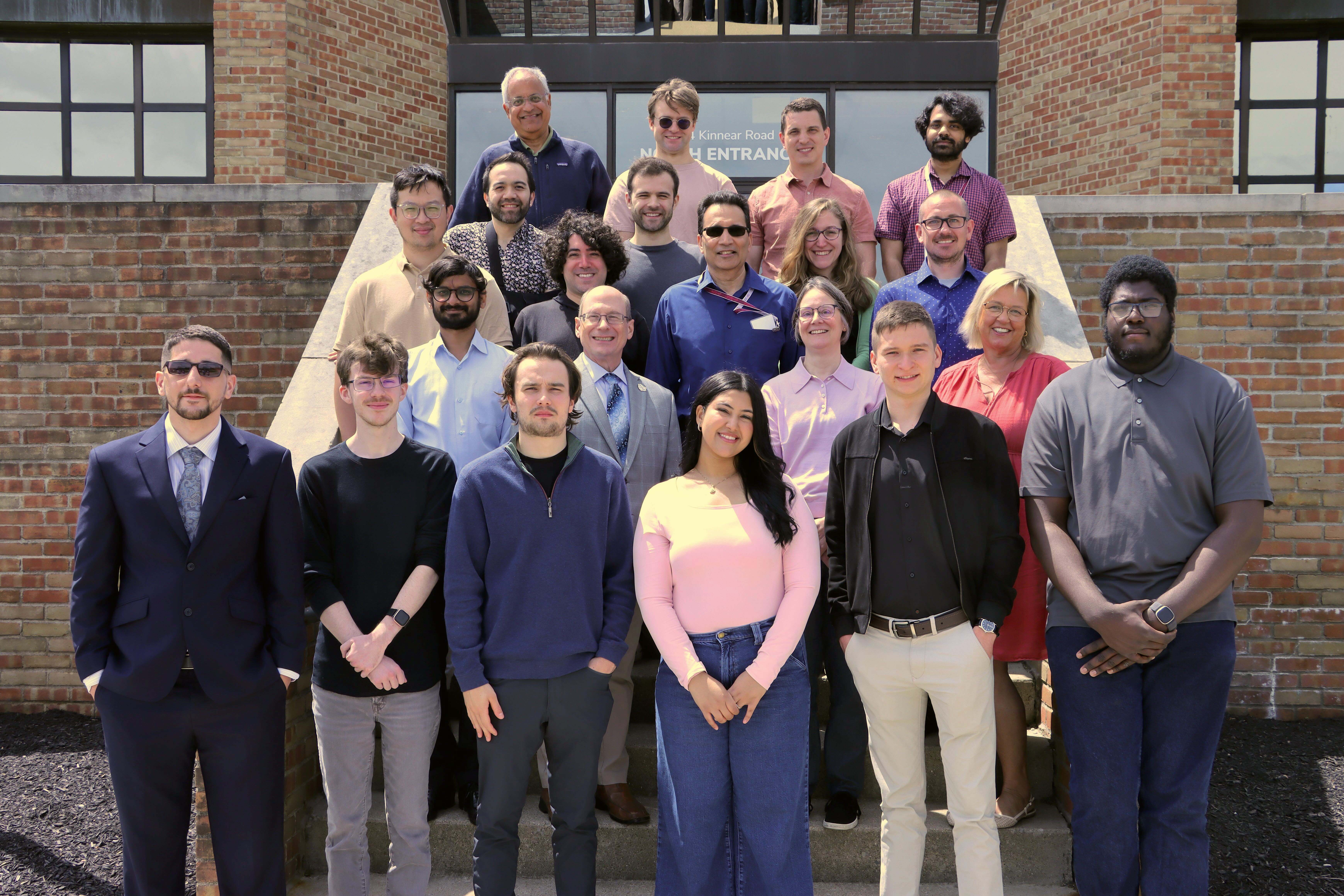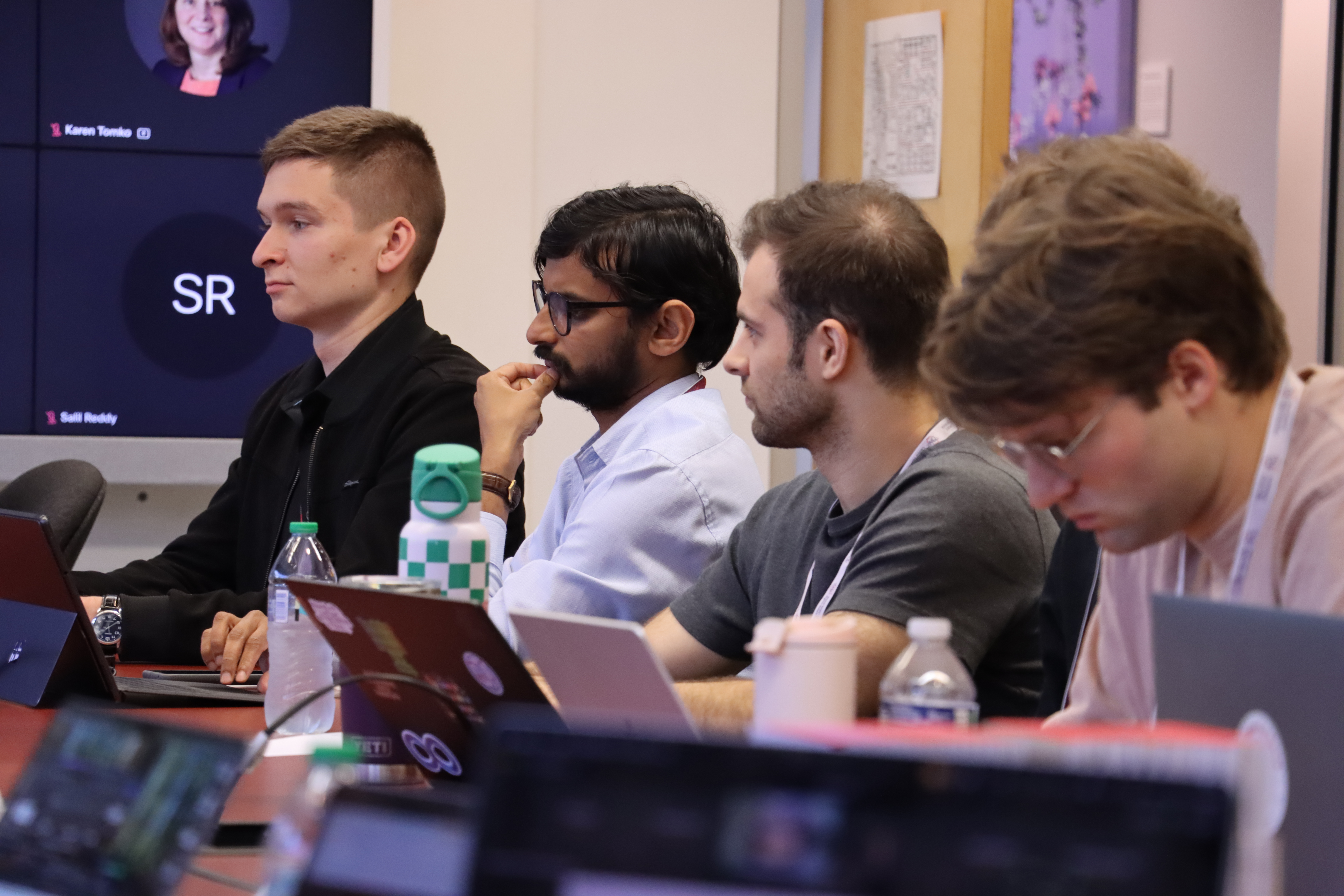Ohio college students learned how to use artificial intelligence technologies to solve various research and engineering problems during an immersive internship program this summer.
The annual AI Research Experience (AIRE) program provides funding to Ohio students interested in working on an AI-focused research project with faculty and staff from Case Western Reserve University, The Ohio State University, the University of Cincinnati, and the Ohio Supercomputer Center (OSC). AIRE, managed by the OH-SCIPE project, seeks to increase awareness of the work of cyberinfrastructure professionals, individuals who provide IT support to university researchers, with a growing focus on AI technologies.

“As AI becomes a fundamental tool utilized across industries, higher education institutions are seeking to give students real-world experience in the novel ways it can be used to address issues,” said Karen Tomko, OSC director of research software applications and a co-investigator on the OH-SCIPE project. “The AIRE program can help undergraduates explore potential education and career paths in the growing field of cyberinfrastructure.”
Faculty and research computing staff at Case Western Reserve University, University of Cincinnati, and OSC were awarded $5 million from the National Science Foundation’s Strengthening the Cyberinfrastructure Professionals Ecosystem (SCIPE) program in 2023 to help train more research professionals in AI and machine learning technologies in Ohio, a project called OH-SCIPE. The project also includes support for several college students to participate in the nine-week AIRE program during the summer.
Each selected student was assigned an AI research project and worked with a university researcher who served as a mentor on the research activities and a cyberinfrastructure professional who offered additional guidance on use of the software and computer systems needed for the projects.
“AIRE is a unique program because students not only engage with machine learning research early in their careers, but also get training using high performance computing (HPC) systems and common tools like Git, Conda, PyTorch, and Linux,” said Evan Jaffe, a machine learning engineer at OSC involved in the project. “These are transferable skills that should benefit them in a variety of future endeavors.”

Five students who participated in AIRE during summer 2025 gained new AI skills in a variety of projects:
Jaser Hamad, Cuyahoga Community College, developed a method to determine which plastics are suitable for recycling and repurposing as new products. The current method for evaluating plastics is time-consuming and labor-intensive. Hamad, working with faculty member Sanmukh Kuppannagari of Case Western Reserve University, built a machine learning system that reads a plastic's “fingerprint” to determine its level of deterioration from environmental factors. AI returns an accurate, immediate assessment that can be fully reproduced by researchers or quality assurance teams at plastics recycling companies.
Isaac Wilson, Columbus State Community College, worked with researchers at Ohio State’s Imageomics Institute, which focuses on extracting biological traits from images of living organisms. Wilson used AI models to scan images, ranging from water lilies and mushrooms to red foxes and blue jays, to find patterns in their traits. The student created an algorithm for sorting photos, compared sets of species, and refined software documentation. This information can help scientists identify and examine biological attributes in individual organisms and species. Wilson, working with Ohio State’s Matt Thompson, Elizabeth Campolongo, and Sam Stevens, learned to write Python scripts and use OSC’s Ascend HPC cluster to process data.
Oleksandr Vykliuk, Cuyahoga Community College, used machine learning tools to develop a better method of reviewing logs to identify the source of failures in HPC systems. Failures can be costly, representing $100,000 per hour in system downtime and lost research productivity. While system logs capture anomalies in HPC performance, they often contain a large amount of data that can be difficult for administrators to parse. Working with Weicong Chen of Case Western Reserve University, Vykliuk created a method to automatically detect the problem by reviewing hardware events, job status logs, node health, and network traffic.
Filip Stopyra, Cuyahoga Community College, used machine learning models to build a process that can detect real and fake scientific images. Working with Weicong Chen of Case Western Reserve University, Stopyra used powerful models to extract features from the images and score their accuracy, fine-tuning the process for the most accurate performance. Stopyra learned how to use Jupyter Notebooks for the project and gained more experience with Python.
Oluwatomisin Fayomi, Franklin University, created an AI interface for a scientific lab web portal that could answer visitor questions. The project required Fayomi to develop a communications protocol between the back end and front ends of the website. Fayomi, who worked with Rajiv Ramnath of Ohio State on the project, studied various AI models, learned how to deploy one through the use of Python, acquired new coding skills, and gained experience collaborating with a large GitHub group.
Overall, the students reported that they enjoyed participating in a real-world learning experience in an academic setting, which allowed them to engage in complex research projects. They thrived on the freedom to design and build their projects, while having ready access to research mentors and cyberinfrastructure professionals who could guide them in their work.
“The internship gave me hands-on experience with real machine learning tools and workflows,” Stopyra said. “If future applicants to the program are even slightly interested in AI, this is a great opportunity and fantastic way to learn and build something.”
“This internship helped push me to build a complete machine learning pipeline from scratch, combining real-world problem solving with scientific rigor,” Hasan said. “If you're curious, driven, and ready to learn practical skills in AI, scientific thinking, and reproducible research, this is a rare opportunity to take ownership of a meaningful project.”
More information about the AIRE program can be found on the OSC website.
Written by Andrea Gibson
The Ohio Supercomputer Center (OSC) addresses the rising computational demands of academic and industrial research communities by providing a robust shared infrastructure and proven expertise in advanced modeling, simulation and analysis. OSC empowers scientists with the services essential to making extraordinary discoveries and innovations, partners with businesses and industry to leverage computational science as a competitive force in the global knowledge economy and leads efforts to equip the workforce with the key technology skills required for 21st century jobs.